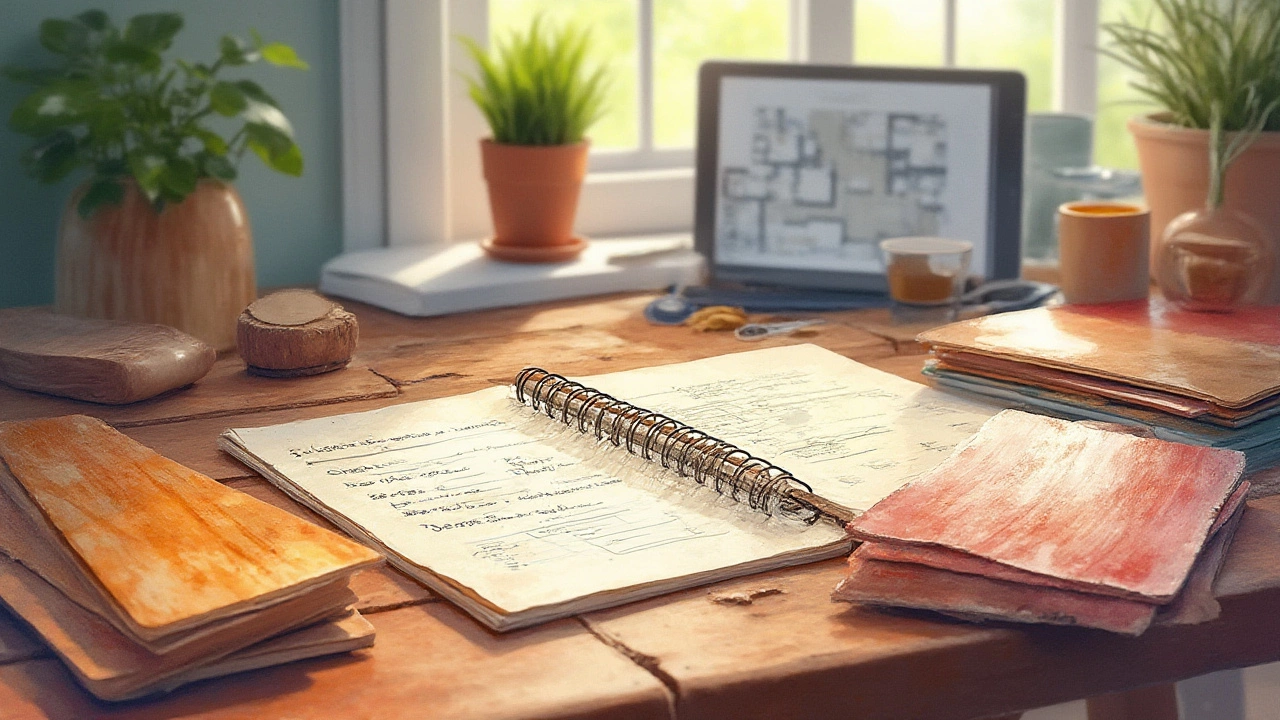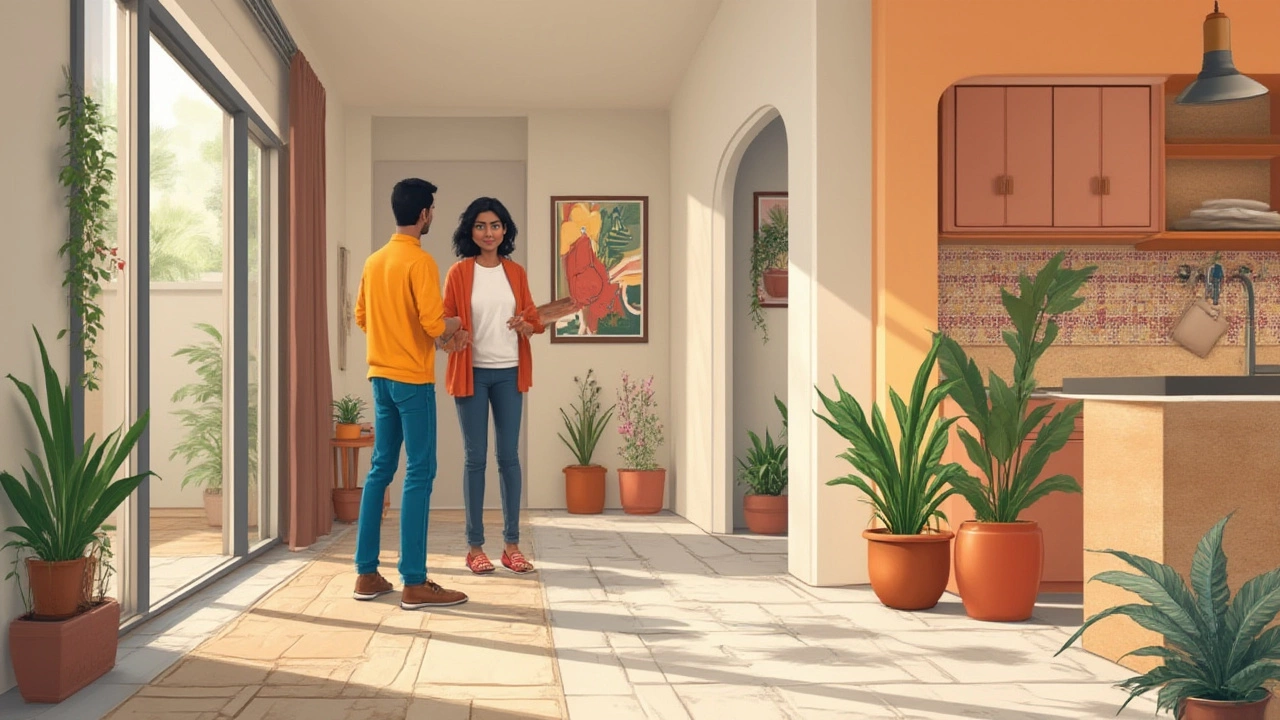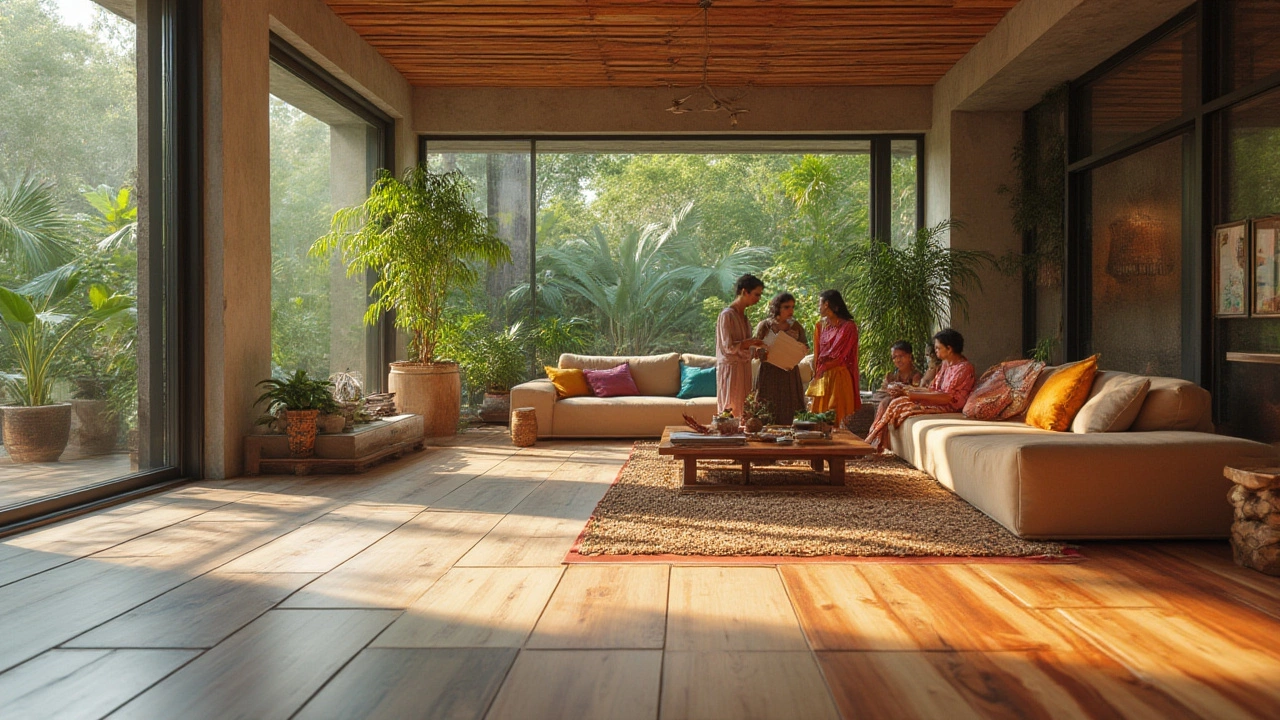Remember the old days when carpet ruled every living room in New Zealand? Kiwis ripping up that shaggy pile carpet is now almost a rite of passage. These days, picking the right flooring for a new build feels a bit like choosing between single-origin coffee beans. There are a ton of options, each with their own tribe of die-hard fans and passionate critics. With construction costs through the roof and weather that throws you more curveballs than a Black Caps test match, getting your flooring right the first time saves a pile of money and frustration. Mess it up, and you could be staring down the barrel of a huge replacement bill—or worse, chilly toes and endless mopping. So let’s dig in: what really works for Kiwi homes built this year, and what just isn’t worth the hype?
The Big Players: Comparing Modern Flooring Types
If you ask around Auckland right now, most new builds swing between engineered timber, hybrid vinyl planks, and good old ceramic tiles. Carpet and polished concrete chime in too, but their shine depends on the room and your lifestyle. Why so many choices? Simple: we’ve moved way past the days when the ‘nice’ house on the street just had the thickest wool carpet. Let’s lay it out and see how they really stack up.
Timber flooring looks classic, adds warmth, and can boost resale value. But here’s the hitch: real timber costs a small fortune—up to $240 per square metre installed for solid European oak, according to builders in Auckland’s North Shore. Even engineered timber, which uses a veneer glued to plywood or HDF, needs more careful installation to avoid Queensland humidity warping or New Zealand’s winter damp swelling boards. On the plus side, modern finishes resist water better than ever, and repairs can be simple—just sand back and refinish. But if you’ve got energetic dogs or toddlers dragging toys and skateboards, timber shows its battle scars fast.
Vinyl planks are the real dark horse. Forget the cheap vinyl tiles you remember from Grandma’s kitchen. The new “hybrid” or “luxury vinyl planks” absolutely exploded in popularity in the last five years. They’re tough, waterproof, and often indistinguishable from hardwood at a glance. Lots of developers use them in high-end apartments, and for good reason. For $50–$80 per square metre fully installed, you get acoustic underlay, 100% waterproofing, and surfaces that brush off red wine spills and muddy boots. These planks can even handle underfloor heating, which is increasingly standard in new homes. The downside? Direct hot sun from big north-facing windows may eventually fade the patterns, and moving heavy furniture can sometimes gouge them.
Ceramic and porcelain tiles bring the cleanest vibes—think ‘Mediterranean villa on Auckland’s North Shore’. They smash the competition for wet zones: bathrooms, laundries, and kitchens. Waterproof, dead easy to mop, and totally unfazed by flooded washing machines or spilled shampoo bottles. They cost a bit less than timber—usually $80–$130 per square metre installed—but you’ll need a pro tiler, and if your slab’s not perfect, tiles can crack. And here’s a weird stat: tiles feel up to 6°C colder underfoot than both timber or vinyl in unheated rooms, which is noticeable on winter mornings. Kids crawling or learning to walk? Tile’s hardness means more loud thuds and banged knees if they take a tumble.
Carpet still wins in bedrooms. New Zealanders love the plush, warm feel. Most new homes go for soft nylon cut-pile carpets with a thick foam underlay—great for insulation and cutting down noise. Stain-resistant treatments are miles ahead of what your parents put up with in the 1980s. But put carpet in the kitchen and you’re just asking for trouble: stains, smells, and endless cleaning drama. Use it where it makes sense: sleep, comfort, and spaces where socks rule the floor.
| Flooring Type | Avg. Installed Cost (NZD/sqm) | Durability | Waterproof? | Best For |
|---|---|---|---|---|
| Engineered Timber | $120–$190 | Medium | Somewhat | Living rooms, Dining |
| Hybrid/Luxury Vinyl Plank | $50–$80 | High | Yes | Kitchens, Hallways, Kids areas |
| Ceramic/Porcelain Tile | $80–$130 | Very High | Yes | Bathrooms, Entrances |
| Carpet | $40–$110 | Medium | No | Bedrooms, Quiet spaces |
| Polished Concrete | $100–$140 | High | Yes | Garage, Open-plan Living |
One last option that’s having a moment: polished concrete. It screams minimalist-chic and works wonders if your new build is aiming for a warehouse or Scandi vibe. With the popularity of slab-on-grade builds in new subdivisions, more people are opting to simply polish and seal the concrete foundation. It’s durable, easy to clean, and perfect for homes with underfloor heating. It’s not cheap—$100–$140 per square metre after all the prep work—but it’ll outlast almost anything else if sealed properly. The catch? It can be chilly, unforgiving on glassware, and super slippery if you pick the wrong finish.

Matching Flooring to Your Lifestyle and Local Climate
Not all floors are created equal in Auckland, Wellington, or rural Waikato. New Zealand’s wacky climate shines a big, bright spotlight on moisture, sun, and daily messes. Timber loves dry, draft-free homes but hates sudden humidity swings. You might think that engineered timber solves all these headaches, but even so, Waikato’s damp winters or Bay of Plenty’s humid summers can still play havoc with expansion gaps. To dodge enough warping to build a half-pipe, make sure your builder insists on moisture barriers.
Sun is brutal on flooring. Large, north-facing windows—a classic feature in today’s new builds to capture more free heat—put floors in the firing line for UV. Timber can bleach, vinyl patterns can fade, and even tile grout starts looking tired after a few seasons without proper sealant. Window films or UV-blocking blinds aren’t just for privacy, they actually add years to your chosen flooring.
If you live close to the beach—think Orewa or Mt Maunganui—get ready for sand. It grinds down soft flooring finishes shockingly fast. Hybrid vinyl comes out ahead here: it’s easy to clean and doesn’t mind the odd bucket of seawater or sandy toddler stampede. Shaggy carpets or soft-pile rugs in entryways? Big mistake. That sand will bury itself so deep you’ll be vacuuming for years.
Pets and little kids are the biggest wild cards when it comes to floor damage. Claws, little wheels, and mystery puddles are a test even for hard-wearing surfaces. Hard vinyl with a rigid core shrugs off most scratches. Tiles are nearly bomb-proof but hard drops mean broken toys (or plates, if you’re unlucky). Some families swear by putting carpet tiles in playrooms so they can swap out stained squares, which is a neat idea.
Allergies are another angle. With one in four Kiwis sneezing their way through a spring pollen storm, many families ditch carpet apart from bedrooms. Hard surfaces don’t hold onto dust mites or pollen the way old synthetic carpets did. If you go this route, just budget extra for mats and slippers because hard floors can get cold, especially in colder regions or for south-facing rooms.
Heating and insulation should steer your flooring decision. Modern new builds have minimum insulation under the code (R1.3 for concrete slabs in Auckland, up to R1.9 further south), but that only goes so far. Tiles and concrete lose heat fast, while vinyl and timber are noticeably warmer. Underfloor heating (hydronic or electric) is now baked into many slab designs, but doesn’t always play nice with every floor type—especially thick solid woods. If you’re keen for that toasty winter feel, check the manufacturer’s spec sheet or talk to your builder early on so you don’t end up with lukewarm disappointment.
House resale value matters, too. Real estate agents in Auckland say buyers still go wild for timber’s look in living areas, but now expect waterproof flooring in kitchens and bathrooms. Vinyl planks are starting to show up on more open homes, so future-proofing your flooring choice is a bonus if you’ll sell in five or ten years.
Want your new build to look sharp and last ages? Mix flooring types instead of sticking with one for the whole house. Use easy-mop, waterproof materials in kitchens and bathrooms, add warm carpet or soft flooring in bedrooms, and let the living area show off timber or high-end vinyl. This breaks up spaces, makes future renos simpler, and spreads your risk if a trend changes or something stains.

Tips, Tricks, and Pitfalls: How to Nail Your Flooring Choice (Without Regret)
Flooring is the last thing standing between a beautiful new home and endless regret. One sneaky trick: always order 10% extra material. Planks and tiles come with the occasional smashed corner or mis-measured cut, and if you run short, it’s a nightmare matching up patterns and color batches later on. This is especially true for timber or vinyl, where dye lots can shift just enough to be obvious.
If you or your builder are tempted to save money by installing flooring before the painting is done or before windows are sealed, just don’t. Even with careful drop sheets, paint splatters and dust get everywhere. Proper install timing helps prevent ruined floors and warranty issues down the line. Builders here in NZ often say, “last on, first admired,” and they’re right.
Care and cleaning make a huge difference for how long your floors look good. Timber likes gentle cleaners—never drown it with water. Vinyl is almost bomb-proof but craves microfibre mops. Tiles get grime in grout lines, so budget for a good sealer. For carpets, regular vacuuming and a pro steam clean every couple of years stops them from turning into dust traps. Go for entrance mats and rugs in heavy-wear areas to stretch the lifespan even longer.
Don’t skip underlay or subfloor prep. Rushed floors squeak or move underfoot and can void warranties. Cheap underlays can sag quickly, making even the thickest carpet feel flat in a year or two. Good quality acoustic and thermal underlay sets you up for cosier, quieter rooms—especially in multi-storey homes where footfalls can echo like a drum line.
Finally, if you want futureproofing, pick tones and finishes that won’t date instantly. Pale greys and washed oaks are hot right now, but neutral mid-browns last against stains and scuffs. Busy patterns look great online but can get tiresome or clash with furniture changes. Test big samples in the actual light of your new place—Kiwi sun transforms colours more than showroom LED lighting ever does. If you’re stuck between two options, go for the one you see in showhomes built for families: those are usually tested (and abused) by the most honest critics—kids with sharp toys and muddy shoes!
The question, "What’s the best flooring for a new build?" really boils down to your budget, climate, household mess, and sense of style. There’s no universal answer, but a little knowledge goes a long way. Talk to builders, quiz neighbours, and visit a few new showhomes before you buy. You’ll thank yourself in five years—probably from the comfort of your own slippers, still loving the floors you picked.

Written by Fletcher Abernathy
View all posts by: Fletcher Abernathy